by: jamie February 14th, 2011 comments:
One of the first questions an astute observer inevitably asks of the Map Kibera team is “how do the residents of Kibera access the map if it’s online?†The answer is that most people don’t have access to the internet, and thus don’t have access to the map of Kibera. This is why we’re aiming to improve our community outreach and engage people with the map offline in Kibera.
In Mathare, we’re working hard to ensure community engagement in the mapping process from the outset. We will also make sure the maps and map data are accessible on and offline and that Mathare residents drive the process.
Last Wednesday we held our second community forum. The purpose of this particular community forum was to present the products of the mapping and media training back to the participants and to other important stakeholders. Â The base map of Mathare already has 750 points, Â 41.3 kms of road, 24 village boundaries and 138 buildings (read more about the base map here).
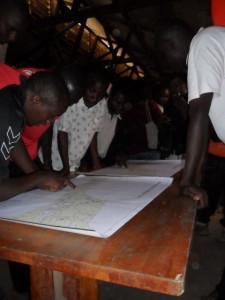
Looking over the Mathare base map
The forum was also an opportunity to discuss the next steps for the mapping work – we are moving on to thematic mapping. Prior to the forum, the training programme planning team (consisting of representatives of Map Kibera, Plan Kenya, Community Cleaning Services, and Mathare residents)  discussed the themes that were most important to us. We settled on water and sanitation, health and education. We agreed that despite the importance of these themes, it was most important to ask the programme participants and other community representatives to identify the themes that resonated with them in their daily lives. What did they want to map?
We printed out maps of the data collected thus far on large sheets and took with us copies of the 4 videos the Mathare videographers had produced.
The forum began shortly after 10am on Wednesday February 9th, with about 160 people in attendance. Simon Kokoyo (the Map Mathare project coordinator) led introductions, asking everyone to stand and state their name and village. It was clear that all villages (and the five wards) in Mathare were represented. There were many familiar faces from the trainings, but also new faces. The Community Cleaning Services (CCS) facilitators and representatives from Dignitas Project and Roots Mathare were there, as well as a public health officer, community health workers, the local area chief and elders. Community Transformers – our host for the training programmes – attended the forum, along with the majority of the training participants.
Simon asked for feedback from mappers  – “What did you learn?†There was mention of learning about technical aspects of mapping: the use of global positioning system (GPS, often used interchangeably with GPRS, despite our attempts to correct this), collecting points, and uploading information. More significantly, participants of the mapping programme discussed how mapping  has helped them identify resources within their villages. One participant mentioned that he realized that he didn’t know his village as well as he thought and there are a lot of resources that are not exploited in Mathare.
The video team talked about what they had learned, including taking shots and editing video. One participant mentioned the use of video to highlight problems and social issues – such as the on-going water shortages in the area.
After the feedback session, Simon divided the room in half – half of the room went back to look at the 2 maps taped on the wall and half watched the videos. We had other maps on the table that some attendees pored over and discussed.

Exploring the map
We had planned to watch the videos together at the beginning of the forum but due to logistical constraints (the extension cable was too short, there were only two power outlets in the whole room and the PA system was using all the outlets) we had to resort to showing the videos in small groups around two laptops.
After everybody had had time to look at the maps and watch the videos, Rose from CCS led look us all through a review – “What did we map?†This feedback session took about 30 minutes – we had answers like clinics, choo (toilet), schools, mpesa points, slaughter house, bridge, matatu stage, etc.
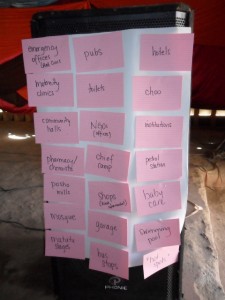
Examples of features collected during mapping
Rose then asked everyone to group these features based on their relationship to one another. Eight “themes†emerged – transport, recreation, businesses, health, water and sanitation, security and institutions, which was further broken into education and institutions. The theme “institutions†also contained churches and there was some debate as to whether churches should fall under education because many schools are run out of church buildings.
After the eight themes were determined, the attendees broke into teams based the five wards in Mathare (Mathare, Mabatini, Mathare North, Huruma, Kiamaiko). Each ward picked the top two themes they wanted to map – based on the importance of the theme in their village. Four of the five wards all picked water and sanitation and health as the top two. The 5th ward (Mathare) picked education and health. So, the themes Mathare residents will map in detail in the coming months are water and sanitation – which really could and should be 2 themes because as we learned in Kibera and from working with CCS, this is a very complicated theme – and health.
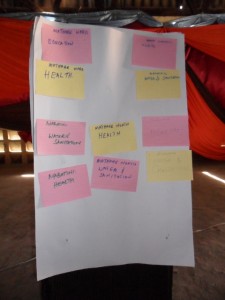
Themes chosen by each ward
It is encouraging and exciting that the two themes (health and water and sanitation) were also themes that the planning committee identified as important. We’re on the right track!
We’ve learned that consensus building is of the utmost importance. Like the first community forum, this second meeting again brought together people of all ages, representing different interest groups. The forum facilitated dialogue among residents of all Mathare’s villages.
This map is for Mathare and the residents of the area need to drive it’s design and development. If they own the process, we hope that they will use the map in future planning and advocacy work. It’s with great pleasure that we can say the excitement and enthusiasm for the Map Mathare training programme is still alive and is in fact still growing.

Mike (an up and coming camera man) practices his new skills by taking footage of Primoz making an announcementÂ
by: primoz February 9th, 2011 comments:
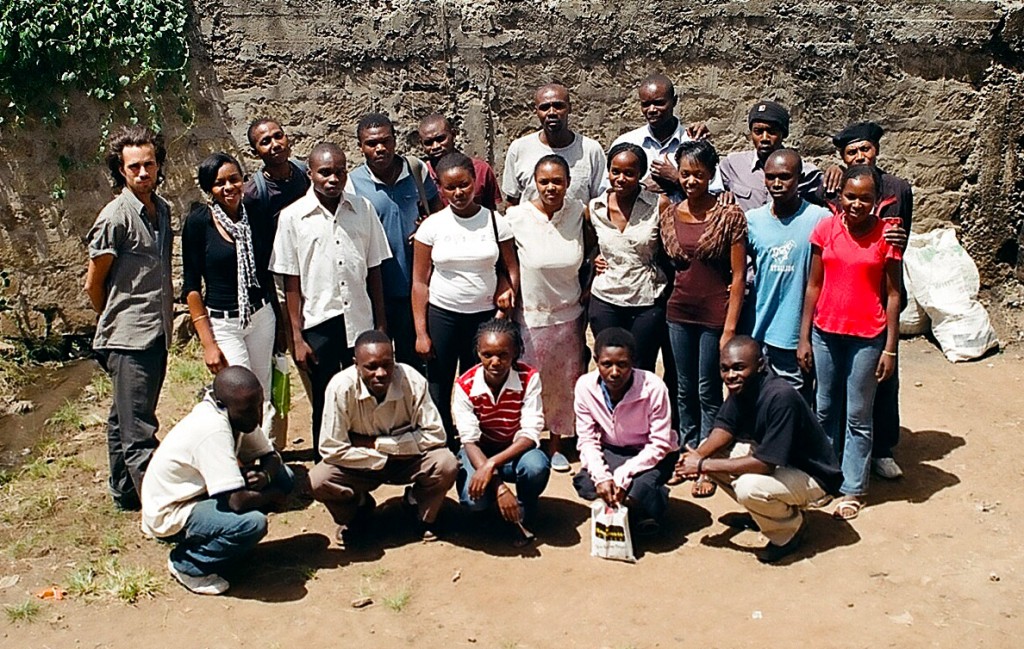
Mathare & Kibera video teams
“I want to learn how to make video for a wedding.“ Joel told me. Joel is one of the “students†who come for the Map Mathare video training. Joel is 65.
We have had an open door policy for this program and it has been interesting seeing who comes for every class and who shows up once, never to be seen again. Some you can tell are fascinated but are too shy to get hands on. We felt that it was important that the students decide what kind of videos they want to work on.
First we went through what it takes to come up with the concept of a video. This is called Pre-Production. We went through Pre Production, Production and Post production. After six classes, the students had put together three videos covering a variety of issues surrounding their communities: the lack of toilets, broken sewers which plague the streets and land grabbing which leads to non existent playing room for children. One more video is being edited about poor road conditions and the high level of accidents.
I started making videos 16 years ago. I only wish I could say my first videos were as impressive as the ones these bright students have put together. Their videos are colorful, interesting and evoking. I can only imagine what these guys will be capable of if they continue showing interest.
We will be doing some more videos similar to the ones they have just finished but we will also be drawing on their imaginations because video is one of the most powerful tools for exploiting ones vision, ideas and purpose. I look forward to seeing where they will take it. And I hope Joel will be with us along the way.
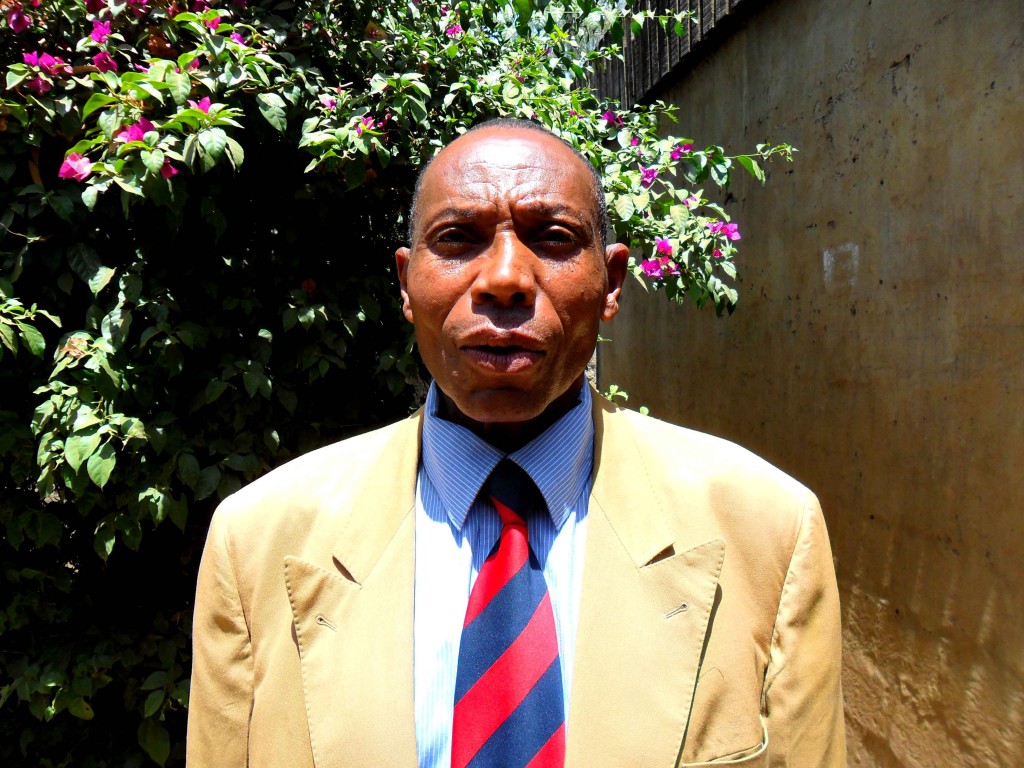
Joel
by: mikel February 8th, 2011 comments:
“Kibera’s people deserve to know the facts about their lives.” – Robert Neuwirth, Shadow Cities.
The excellent book Shadow Cities narrates a conversation the author had with a Kibera NGO officer who had overseen research into water pricing in Kibera. The ad-hoc system of water vendors and CBOs in Kibera led to water costing 5, 10, 20 times what a resident of nearby wealthy suburbs paid for municipal water. When asked for the reaction of Kibera residents to this news, the officer told him that he couldn’t possibly share this information with residents because there could be riots.
We strongly disagree that Kibera can’t handle truth. Unfortunately this was one of many research projects we heard about that produced reports about Kibera for other audiences, with disinterest to sharing the results even with Kiberans who helped organize the research. It’s unethical.
Map Kibera has received its fair share of research proposals, and have only so far worked with IDS. They shared our values for how research might best work in partnership with ‘practitioners’ (that’s us), and the proper position in the “Research-Practice Balance”. This post is a quick draft at pulling out principles that guide us in research, and hopefully can serve as a brief guide for other research projects that wish to work us, within Kibera, or within any ‘development context’.
Design in Partnership
For us, research is a partnership. We want a core role in the design of the research project, well before they shape of the research is finalized.
If you’re studying development, or designing some kind of technological intervention, you must at least talk to the subject of research well before submitting the proposal (amazingly this doesn’t happen). They will have very specific guidance on what will work, what won’t work, how your research will be better and more beneficial. It’s possible they don’t want to be studied, respect that choice.
With IDS, we met Evangelia last June, and have had a very strong dialogue throughout the entire process.
Contribute concretely to the research subject
Research, especially in Kibera, is often simply extractive. The researcher interviews, surveys, holds group discussions, and analyses the findings, and publishes in a journal. How did the subject benefit? And we’re talking more than simply sharing the results (though that’s important of course). How can a research intervention promote positive change? Yes, this is anathema to usual “objective” research practice. However, our view is that it’s impossible to be disengaged from the subject of development research, and is in fact unethical to not contribute something concrete.
With IDS, all of the interviews and meetings were facilitated by Sammy, leading up to a gathering of everyone to reflect on the results. This was incredibly valuable for everyone to share their perspectives and understand others. We thought of it as Group Therapy. Additionally, we organized an amazing inquiry led learning session with Aptivate, which contributes to creating a guide book for future trainings.
Complement ongoing projects and schedule
Participating in research takes a lot of time and energy. Map Kibera is busy! The perfect time for you might a horrible time for us. Again, let’s work together to design the research so that it doesn’t negatively impact the actually doing stuff.
This isn’t easy of course. Even with IDS, we were going 150% to do both the research and the rest of the day to day. But we worked it out!
Avoid Survey Fatigue
Kibera has survey fatigue. Imagine having a complete stranger coming to your door to ask you detailed questions about your family’s toilet habits. And then someone else doing it. And again. Would you even answer the first time?
Question whether a survey is really required. Can you get the information you need from someone else, or by a different technique. If you must survey, design it in such a way to reduce time required to answer your questions.
Publish data and results open access
Not surprising, I hope, coming from us. Share your research paper openly, in an open access journal or by publishing to your website.
You’ll be able to find all the IDS research results on this blog when finalized.
Further, publish the data, or make it easily available to other researchers. Your data can live its own life, and benefit way beyond what’s possible in your own work. If the data is sensitive, then of course be careful, but remember the default is sharing everything.
What else?
Let us know in the comments!
This post is part of a series exploring the ideas and issues that have emerged in our research project with Institute of Development Studies, supported by DFID. All posts from the Map Kibera team, the researchers from IDS, our trainers and colleagues are collected here. As always, we are eager to discuss this work, so we hope to hear your comments.






